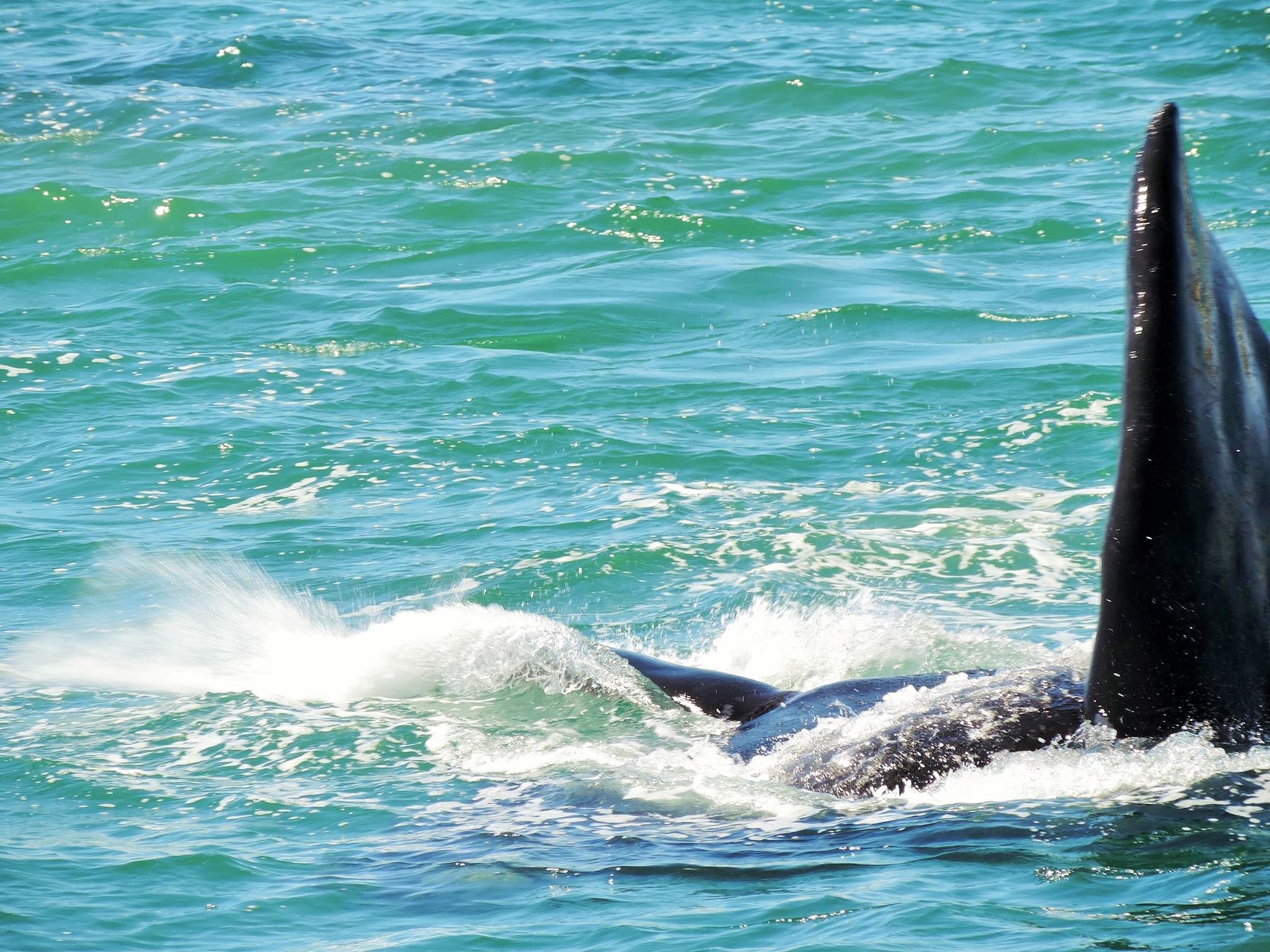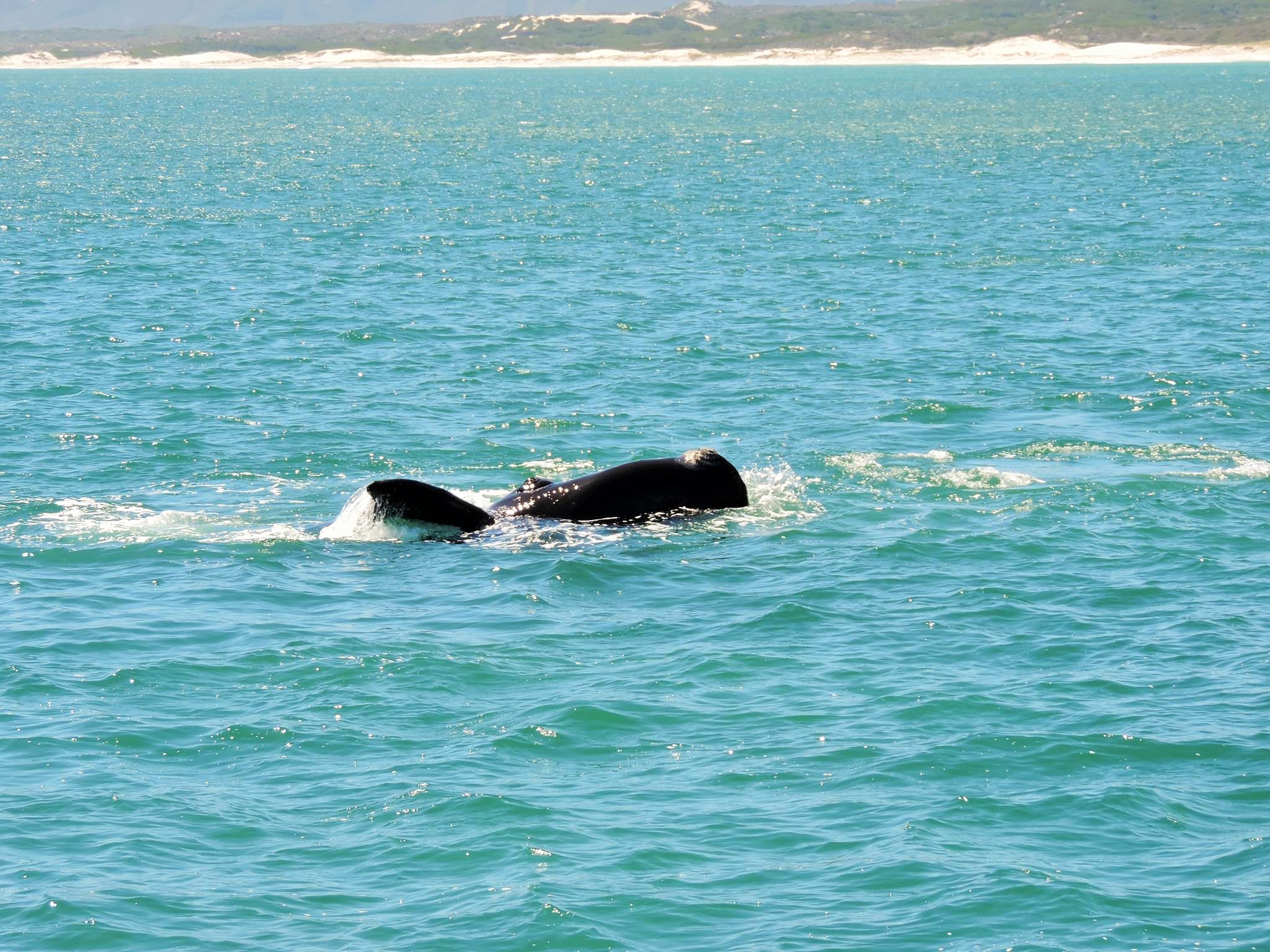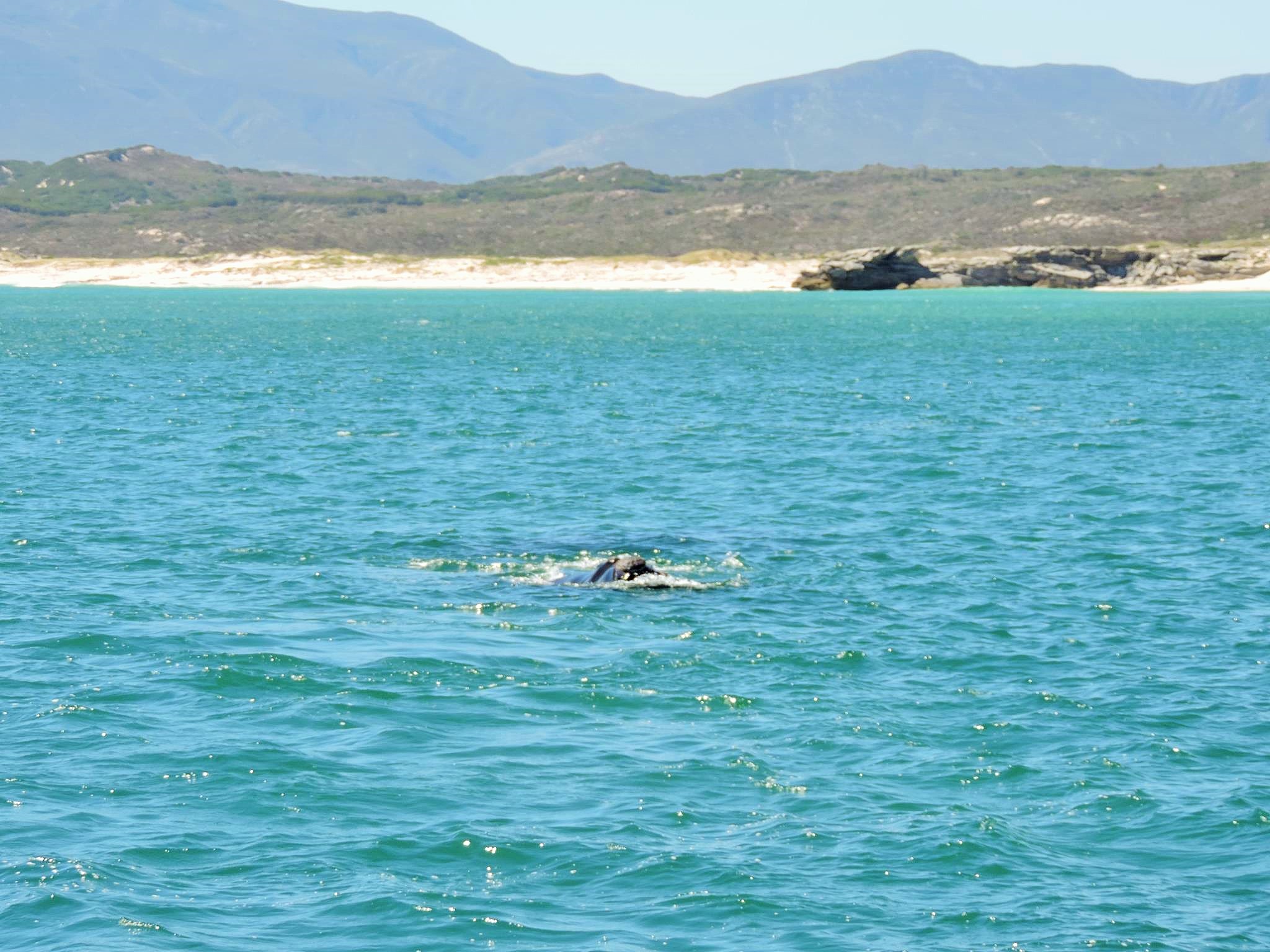This article here will be about one of the most memorable experiences on our travels. It is about an encounter with the biggest living beings on our planet, and this almost on the touch! Also on our unique Whale Watching Tour in South Africa was the fabulous Parxi Deluxe, of whom some great photos are included here, as well as an interview with marine biologist Karla van Zyl from the Ivanhoe Sea Safari.
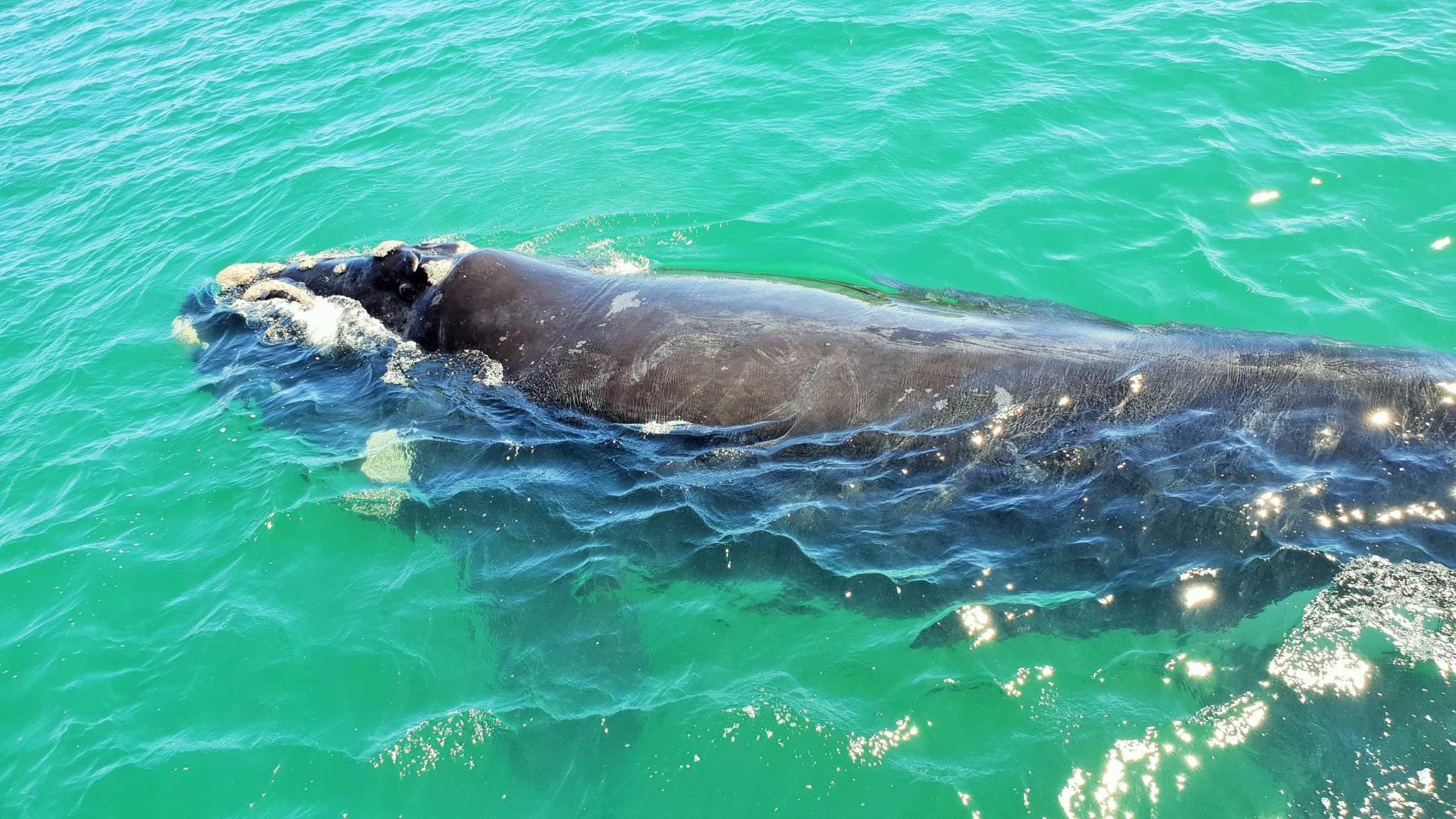
Unbelievable how close these majestic beings came to our group on the boat and communicated with us in their own way. Especially the experience with a whale mother and her child was breathtaking. The two swam again and again under our boat and the little one showed us countless times how great he can jump. It was obvious, they wanted to interact with us and especially the little one wanted to play. It often seemed as if he was waving at us to say hello. Simply incredibly fascinating with goosebumps effect and forever to remember!


Our tour started with the highly recommended Ivanhoe Sea Safari in Gansbaai, located 180 km and two hours drive southeast of Cape Town at Cape Nature Walk Bay and Hermanus Bay. The organisation conveys knowledge about the animals, but also networks with science institutes and is active in various research projects. Education and research are in the foreground and play an important role. Our skipper Johann provided interesting information and background knowledge throughout the tour, but also on board was marine biologist Karla van Zyl, who at that time also did her degree in zoology and collected scientific samples during the boat trip. Among them water tests, but above all kind of body fluids of the large mammals to be able to monitor and investigate the state of health.

In South Africa there are strict regulations and marine mammals are under special protection. Unfortunately this is not the case in every country in the world and there has a lot to change. It is particularly important to convey knowledge about nature and its animals in order to create an enlightened awareness among humans. We recorded an interview with Karla van Zyl, the sound quality is not that good due to the sounds of the sea and the noise of the boat, but in the following the interview is also written and can be read, including the best photos of these magnificent and dignified creatures.
I am sitting on the boat at the moment and we are on an amazing Whale Watching tour with the Ivanhoe Sea Safari crew. Now I am speaking to Karla van Zyl from the team. How would you describe what you do here with Ivanhoe Sea Safari?
I am currently doing my degree zoology science basically, but I am still studying at the moment. I am half way through my degree right now, but there are still some couple of years to go.

We just went out on the water to see some whales and I have seen whales before, but I didn’t expect to get that close to those animals. I never had the experience that whales even went below the boat. It was as well very nice how skipper Johann explained how the whales think and how they feel. Before he explained really detailed how the whale mother and the child were interacting with us. I think a lot of people don’t know if it is good to do these whale watching tours, some would say it is a danger for the animals. But I didn’t feel that in any way, because he said as well if they don’t want to come to us, they could easily go away. Is it good to do whale watching tours and to promote it, or should tourist avoid it?
You have to think twice. When it comes to any kind of wildlife you always have to think twice about viewing and how people approach animals. You never want to put animals under pressure and you never want to make them feel uncomfortable, which is also difficult because you don’t always know how animals are going to react. But anything, not just whale watching, you always have to do your research before you go out. Look at the companies, read the reviews and see what people say. Like if you look on whale watching for example and what we do here, it is all about the way how we approach the whales. Our boat is quite small as well, it is not that noisy and quite calm. Noise pollution is a danger in general when it comes to whales and dolphins globally. We keep our boat nice and small and we don’t take a lot of people out, so a maximum of 25. This is at the moment strict. And that way the people can also move around better. We don’t want to move the boat when we get to the whales as well. We go out to a certain point and then it is completely up to them. But I also think if you want to work with these animals the right way and if you respect the animals, which is very important, then education is the key. It is not just the education about whales, but all animals around the world. Most animals are endangered today, most populations are declining. So if you can take people out and tell them about the animals, make them aware of the problems that they are facing, it is a really nice way to educate people. But it is important to always keep your distance and if they come to the boat, so we were lucky today, they don’t always come that close, but if they come and do have a look at the boat, it is great. The people like to look at the animals that close, that is why they are doing those tours. So if the whales come that close and they are doing that, it’s nice. If they don’t, than it is just one of those things. They just go away and they are also wild animals and are on their own.

How can you manage it, that it is not stressful for them? Are there special rules or laws to protect this? Is there a limited number which cannot be exceeded?
In South Africa when it comes to whale watching, as well with other animals, but with whale watching it is very strictly regulated. Our whole coast line are split up in certain permit areas. And then they look at that permit area and the size and also the boat traffic. It was quite like today for example. You don’t really see any boats out there, besides sea monitors or control vessels. But it can be a high traffic adn you have trollers out there. At the December holidays or other holidays you have a lot of recreational people going out and they are going for fishing. Each area is very strictly regulated when you look on the boat traffic. Our area where we work in is the Gansbaai Nature Reserve at the border to Hermanus. And here we are the only boat which is allowed to watch the whales in that area. The whole area is heading straight across to basically to the opposite side of the bay. During dwell season it is also a sanctuary for the whales. Only official vessels are allowed here. The nice thing about the commercial fishing vessels is that they are staying further offshore. In our area we are basically the only boat which is allowed, no recreational boats or anything else is allowed. Also in South Africa if you go out fishing and there is a whale or you see a whale around, you are not allowed to go within 300 meters to that whale. If you are fishing and you stay with your boat and a whale comes to you, there is not much you can do. The animals are free, like any kind of wild animal. But nobody is allowed to go closer than 300 meters. And if there are multiple whale watching boats within one area, like for example Agulhas has a really big whale watching area. They have three boats that are operating in that area. But only one boat is allowed within 300 meters to a single animal.

So you don’t have hundreds of boats which are going only on one whale. Like going out, looking at the whale, going back in and doing all that up and down between all the whales. You also have to go out really really slowly. A lot of animals do interact better then. You are also not allowed to move very quickly between whales. It is very important to follow these regulations and we are also getting always reregulated. We need to reapply for permits at certain times a year. We all have to do special courses, not only the slipper. We all need a special license for that. We need a passenger license and there is a whole bunch of things which you have to actually qualify for to get a whale permit. We need actually to have two permits. We have a boat whale watching permit and and we also have a research permit as well. We do work with research centers and this is a complete different permit. Everything needs to be looked close at and everything needs to be regulated. There has to be a control. We had a process with another boat which went to our area with the tides, but they have to stick to the rules. So no more than one boat within 300 meters. These whales they really stay foot and they are always approaching the vessels. So you can see the whales and you don’t have to put pressure on the whales normally. There is also always a break in between. When we go away they can move on again and they are always are moving. But you have to stay within the area and the regulations. It is not only with whale watching, but shark watching as well. They need as well a lot of permits and everything has to be regulated. It is strict within the South African waters and the animals are still protected. Even if you look on the size of the coast. The populations of the animals are quite strong and in the South African waters there are today a lot of species. Nobody is allowed to swim where they are.

Do you operate every day and make tours?
We are independent and also we tend to only operate in whale season. Normally we try to go from August to November. Those three months and the rest of the months we do it really quiet. So you have the numbers of tours you can do, and when it is fully booked then there is the limit.

If people want to go and it is full, sometimes they have to wait. You don’t put on more people on a boat?
No, we can actually put on 40 people on a boat. But we are only licensed to 32 and we stick to 25. Like when the whales come a little closer we rather want the people to be able to walk around and to change their point of view, than us having to move with the whales. Even if they are not that close and farther away. We don’t want to put pressure on them or stress them out. We just want to view and we don’t want to change that area or anything like that.

What kind of whales did we see before? And how many of those still exist at the moment?
We saw the Southern Right Whale. The population’s summit is in the southern hemisphere and it is something between 14.000 to 16.000 animals. Their population is quite strong and we have a very small increasing growth every year. That’s why they are listed at less concerned. It is not only the size of the population, but actually the increasing growth every year, that makes them listed at less concerning.
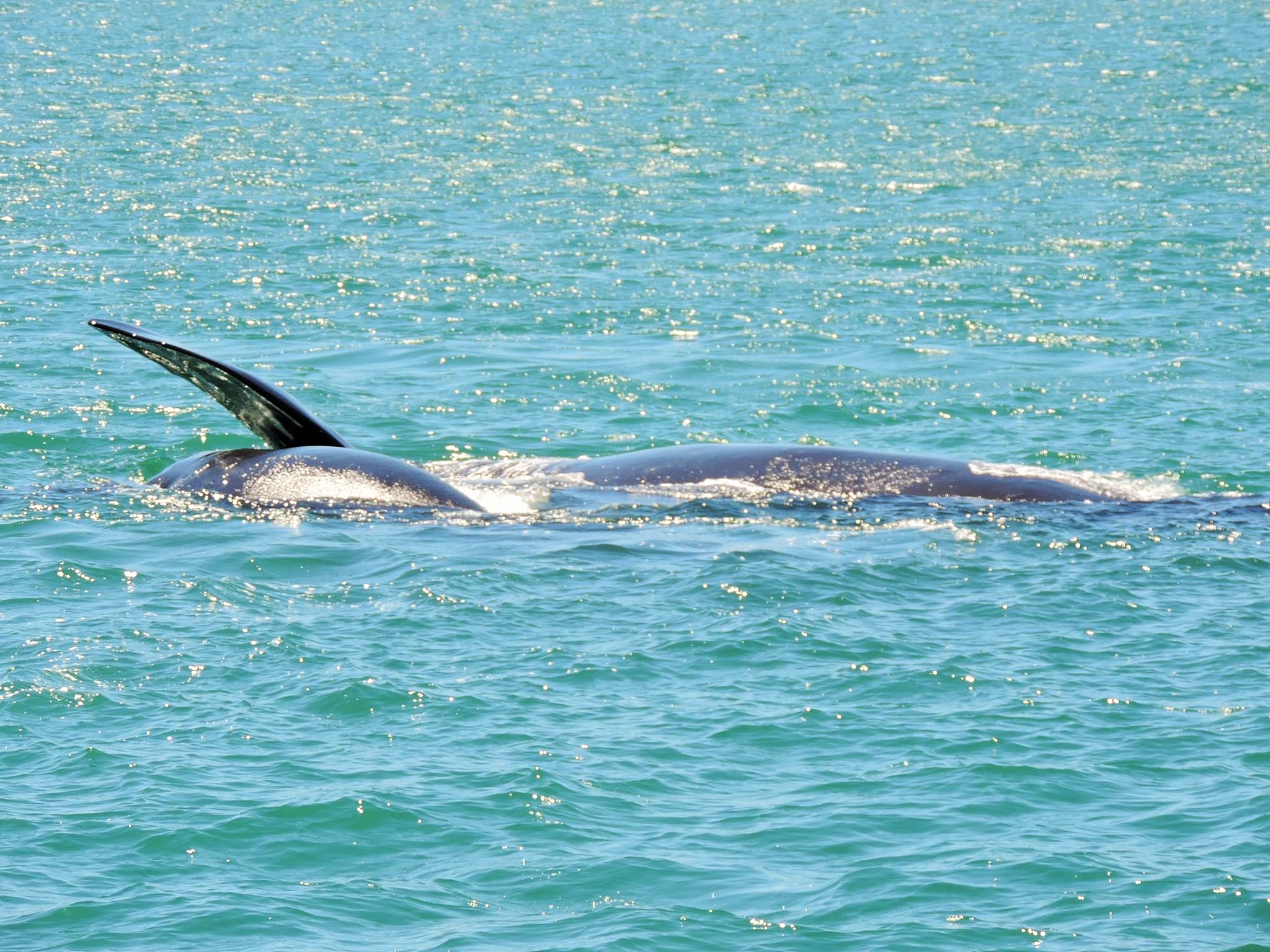
There are good regulations in South Africa by law and you really want to take care of the animals, but how does it work with other countries? The whales are swimming over huge distances, so if you protect a lot, but another country is killing them, what do you do about that?
It is a good question and it is also a very difficult question. Each country has their own policies they implement for certain animals and their own conservation rules or fishing rules. When you look on the international whaling commission there are very very strict rules in place from them. But the ocean is very big and it is very difficult to control everything. That is why I also think that education is very important. You have to tell people about it and make them more aware of certain situations. And word of mouth is one of the best ways between people and how they are telling others about something. Like „I saw this“ and „I learned that“ or „It was really interesting“. So I think it is very important to educate people about that as well. Not just around the world but especially in South Africa. Most people here don’t even know where their food comes from. If you look on the fishing industry and things like that, you need to look on that topic around the world. Fish stocks are collapsing, water temperature is rising. If we don’t have plans we will lose everything. It all piles up the food chain. It is important for people to go on types of excursions like whale watching and those kind of things, but it needs to be done the right way. And it has to have the regulations in place. Quite often when something goes wrong when it comes to wild animals, it is often the animals who gets the blame. But no, it was actually us who caused it. People don’t do always smart things, you know. But I think it is really important to educate.

So it is about education and it needs a teacher. How can people from other countries support the animals and you by protecting them and the whale environment?
The can have a look at our website. There are quite a few links on there. We have some people who are doing phenomenal research in South Africa. Not only with whales but also with other sea animals as well. But there is a lot of great stuff going on like Ocean Research or Deep Watching, which are obviously amazing. We know what the whales are doing when they are around Antarctica, we know what they do when they are around the different countries like Argentina, South Africa, Australia and New Zealand. But about the migration in between, we know mostly nothing about it. And that is where the genetic research is going to help us out a little bit. People can look it up on our website or social media and they can follow it and see what it is all about. These animals teach us so much and there are so many research opportunities. In South Africa there is a new program which is called Doctor Whale as part of the Whale Unit at the Marine Mammal Research Institute and they only do research on whales around our coastline. Organizations like that are absolutely amazing! If you go on our website, you can look them up. There are links to their pages and you can look them up on Facebook as well. They do amazing work around our coastline. It is really phenomenal what people are doing today with animals in general.


Ivanhoe Sea Safari abou themselves on their website: Hermanus whale watching is renowned for the most prolific whale viewing experience in the world. 5yrs running Certificate of Excellence Winner – Ivanhoe Sea Safaris offers the best Hermanus Whale Watching in the area. Just a 2 hour drive from Cape Town to the whale capital of the world Hermanus, launching from Gansbaai. Here you find the true gem of South Africa’s whale watching off the cliff of De Kelders, as well as us the original pioneers of the industry in South Africa. We also boast one of the limited whale watching permits allocated country wide. We specialize in Boat Based Whale Watching and we pride ourselves in offering a uniquely personalized service to all our clients. We operate in Area 6 of Walker Bay which is celebrated as the best location from which to view the magnificent Southern Right Whales. Our guests are looked after in lavish style by our fully qualified, proficient and registered whale guides whose only duty is to make your trip as memorable as possible. The Ivanhoe is a 42 feet custom built catamaran specifically designed to allow optimum viewing of the whales. The boat is licensed to carry 40 passengers but we restrict the loading to 25 passengers, this avoids overcrowding and passengers can move freely around and enjoy there viewing of these gentle giants. The boat is safe and stable for the whole family to enjoy, from infants to grandparents, you will find a very passionate, experienced and professional crew that loves nothing more than to share their knowledge and make this a truly memorable experience!




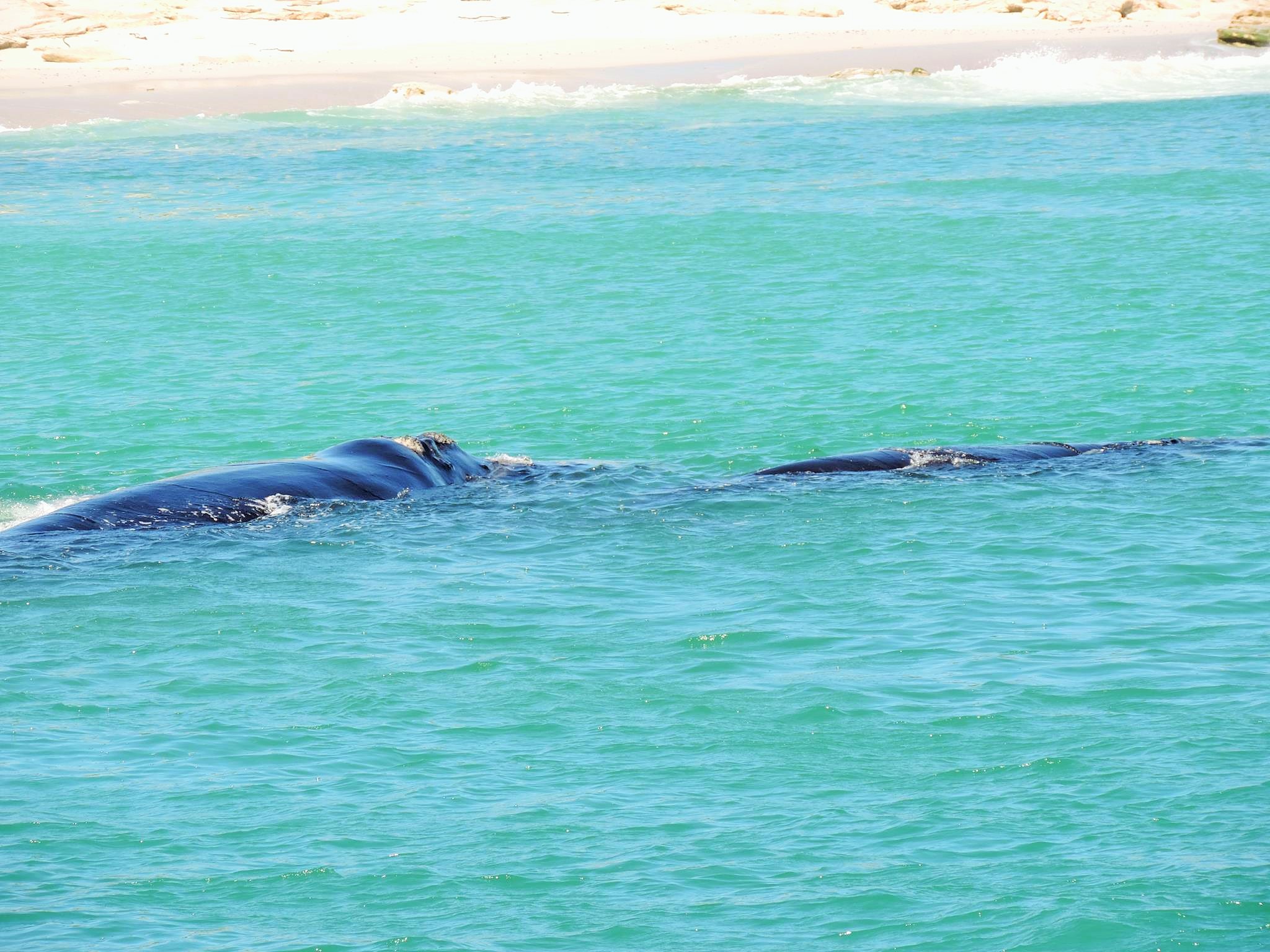
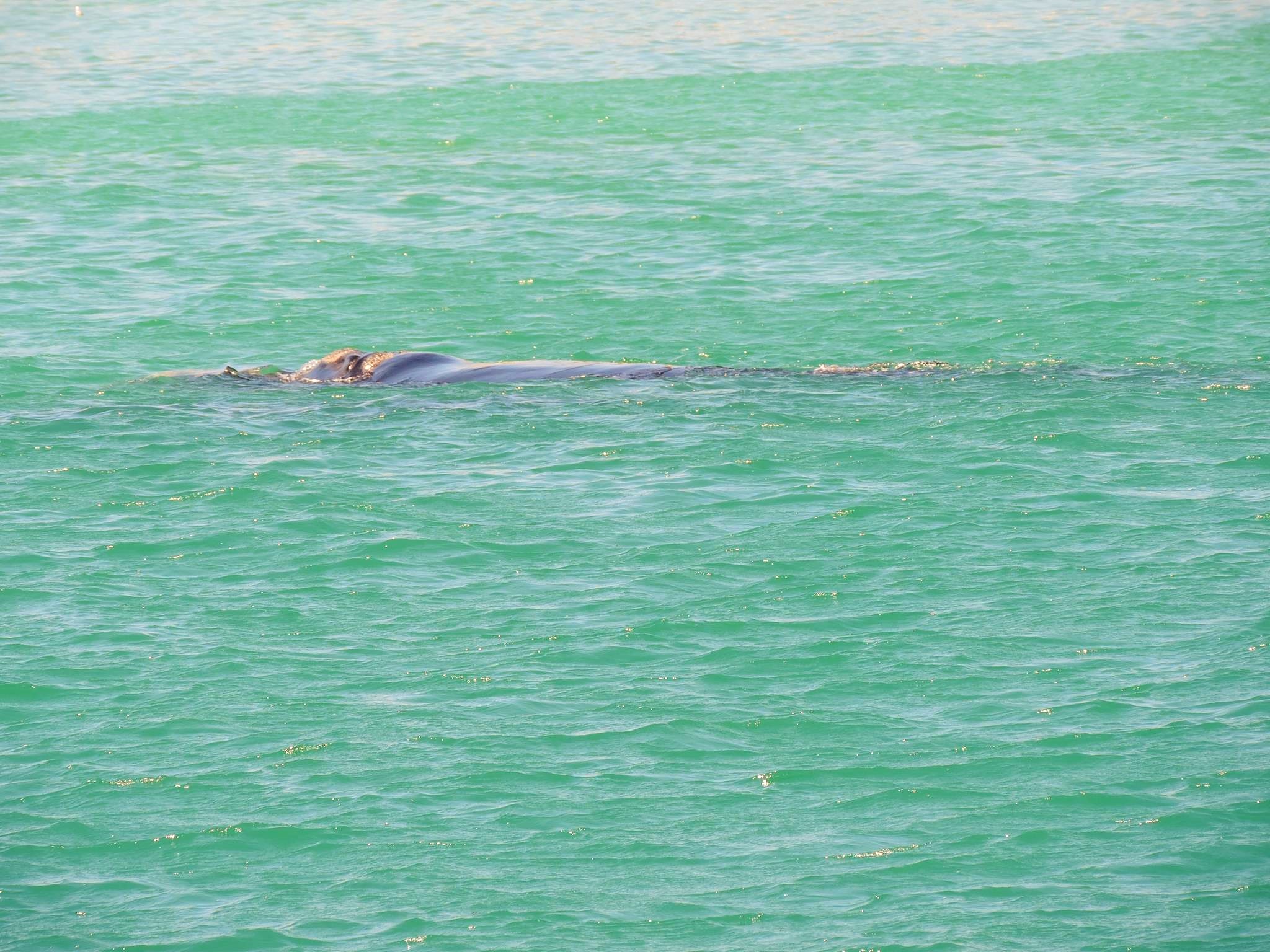

INFOTHEK
Ivanhoe Sea Safari
![]() Adress: Gansbaai Harbour, Gansbaai, South Africa
Adress: Gansbaai Harbour, Gansbaai, South Africa
![]() Email: info@whaleviewing.co.za
Email: info@whaleviewing.co.za
![]() Phone: +27 28 384-0556 – +27 82 926-7977
Phone: +27 28 384-0556 – +27 82 926-7977
![]() Website: https://whaleviewing.co.za/about-us/ivanhoe
Website: https://whaleviewing.co.za/about-us/ivanhoe
![]() Facebook: https://www.facebook.com/whalewhatchingsa
Facebook: https://www.facebook.com/whalewhatchingsa
![]() Instagram: https://www.instagram.com/ivanhoeseasafaris
Instagram: https://www.instagram.com/ivanhoeseasafaris
![]() Twitter: https://twitter.com/whalewatchingsa
Twitter: https://twitter.com/whalewatchingsa
![]() Youtube: https://www.youtube.com/channel/UCWxIxXJTz3E8fdh_sK2_BXQ
Youtube: https://www.youtube.com/channel/UCWxIxXJTz3E8fdh_sK2_BXQ

MORE ARTICLES ABOUT SOUTH AFRICA
>>> Cape Town – Streetart & Graffiti Map <<<
>>> Sprayer & Illustrator – Wayne BKS <<<
>>> Woodstock – Urban Art Quarter <<<
>>> The Grind Radio – Pretoria <<<
>>> Interview: Journalist Jade Wood <<<
>>> Limpopo Safari – Balule Nature Reserve <<<
>>> Andy’s Camp – Phalaborwa <<<
>>> Streetart Johannesburg – Maboneng <<<
>>> Streetart Johannesburg – Northcliff <<<
>>> Jozi Northcliff Architecture <<<
>>> Cape of Good Hope <<<
>>> Boulders Penguin Colony <<<
>>> Balule Bush Walk <<<
>>> Wildlife Gallery <<<
>>> Bo-Kaap – Colorful Architecture <<<
>>> Bo-Kaap – Graffiti & Streetart <<<
>>> Hermanus – Costal Artworks <<<
>>> Hermanus – Whale Watching <<<
>>> Ivanhoe Sea Safari – Karla van Zyl <<<
>>> Blyde River Canyon <<<
>>> Bourke’s Luck Potholes <<<
>>> God’s Window – Graskop <<<
>>> Streetart Hout Bay <<<
>>> J.G. Strijdom Tunnel <<<
>>> Dullstroom – Emnothweni <<<
>>> Cape Town from the Sky – Heli Flight <<<
>>> Cape Town – African Trading Port <<<
>>> MMXII – Delicious Food Market <<<
>>> Victoria & Alfred Waterfront <<<
>>> Seapoint & Three Anchor Bay <<<
>>> White Shark Ventures Gansbaai <<<
>>> Gansbaai – Overberg District <<<
>>> Hazyview – Mpumalanga Sabie River <<<
>>> Chapman’s Peak Drive & Hout Bay <<<
>>> Cape Town – City Bowl & Old Town <<<
>>> Old Biscuit Mill & Food Market <<<






























